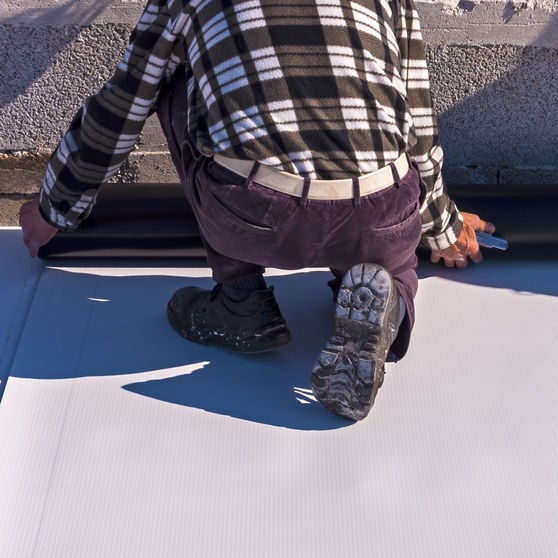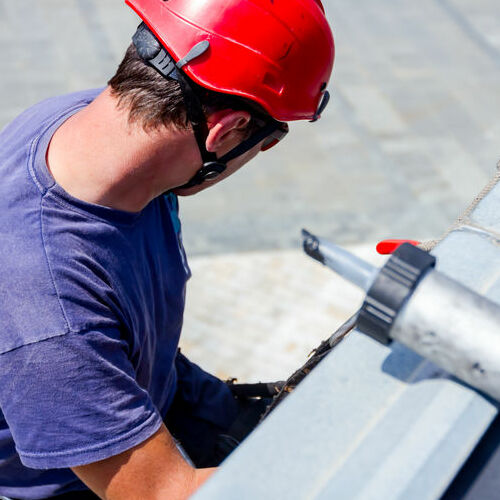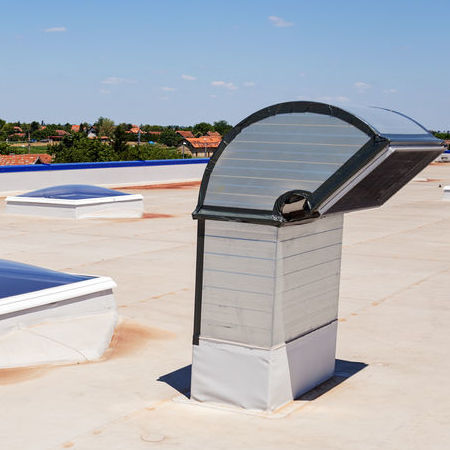
TPO roofing for commercial buildings
If you manage or own a commercial or industrial structure of size and roofing options are on your plate, consider TPO roofing. TPO is short for Thermoplastic Polyolefin and is a single-ply roofing system. A reflective membrane made from ethylene-propylene rubber and polypropylene that have been polymerized together.
TPO roofing is installed as a fully adhered system or can be mechanically attached, depending on the best scenario for the building. While EPDM and PVC both offer excellent flat roofing options, TPO roofing has benefits that outweigh what those two membranes can offer.
If your wondering is tpo roofing good, among the TPO roofing benefits are:
- The Cost: TPO roofing has a relatively low cost with an average as low as $5.00 per square foot installed.
- The Durability: TPO roofing is resistant to algae, bacteria, and dirt. It is UV resistant and chemicals This flexible membrane can withstand impact, punctures, and tears. Which means when it comes to tpo roofing and hail, TPO roofing will win.
- Simple Install: TPO roofing is flexible and lightweight, making installation easier with less seams. This means small crew is needed and that is a money saver.
- Energy Efficient: TPO roofing is energy efficient, which has attracted many homeowners to install it as well. The savings it provides with cool costs is ideal for buildings located in warm climates.
What is the life expectancy of a TPO roof?
TPO Roofing is a single-ply type of roofing material that is usually recognized by the white roof top. The benefits we listed above are key factors in why it has become a popular choice among commercial building owners.
- Affordability
- Durability
- Energy Efficient
- Long Lasting
Because a commercial or industrial size structure can be expensive to roof, it is important to get a roofing material that will last a long time. TPO roofing is just the right type of roofing material. commonly used for commercial buildings. This is the usual white roof that you can often find on large structures.
When professionally installed and properly maintained, TPO roofing can last thirty years or longer. It has that long life span because of its resistance to UV rays and being resistant to impacts, punctures, and tears.
Is TPO roofing fire resistant?
TPO roofing meets California’s Title 24,, which is a higher standard than the ENERGY STAR rating. This means that it is not only fire resistant, but it is mold, impact, traffic, and wind resistant too.
Does TPO shrink?
If your TPO roofing is not professionally installed as it should be, yes, it could pull at the seams and shrink with exposure to the elements and with age.
How do you maintain a TPO roof?
TPO roofing is ideal for flat or low-sloped roofs. A durable, energy efficient, and flexible roofing material, with proper maintenance, you can expect a thirty-year lifespan. This maintenance includes routine cleaning which also extends the UV resistance that TPO roofing offers.
To clean TPO roofing, use a cleaning solution as recommended by the TPO roofing material manufacturer and a pressure washer. You want to protect any areas where water could enter the building like the base flashings and low curbs. Any foliage on the roof top should be protected along with any chimneys, pipes, skylights, and solar pannesl.
Using a low-pressure on the top membrane, remove any dirt and dust. Then with a long handled, soft-bristled scrub brush, scrub the roof surface with the cleaning solution. Be cautious of over-zealous cleaning that can cause damage to the TPO roofing material.

What is the difference between EPDM and TPO roofing?
EPDM roofing and TPO roofing are two single-ply roofing membranes, each having advantages and disadvantages. Whe comparing tpo roofing vs epdm the differences begin with the energy efficiency.
- EPDM roofing has a dark surface, making it ideal for cooler climates. In warmer climates, because EPDM absorbs heat, it isn’t the best choice for roofing.
- TPO roofing on the other hand has a white surface which reflects the heat and UV rays. This keeps the HVAC system from running as much during hot summer conditions.
- EPDM roofing isn’t as resistant to puncture and tears. Because it is three times more prone to tear, it is also three ties more prone to leaks.
- EPDM roofing is a synthetic rubber surface that hail stones will bounce off without damaging the roof.
- TPO roofing is impact resistant, but hailstones will leave circles where they hit.
- TPO roofing can be chemically or mechanically installed. EPO roofing must be heat welded.
When choosing a roofing material for your commercial structure, it is important to work with a commercial roofing contractor that is experienced and familiar with all roofing material types. They will know the climate and environment and be able to recommend if TPO roofing is the right choice for your structure. Call 706-301-8630 today for your TPO roofing in Jasper, GA.




